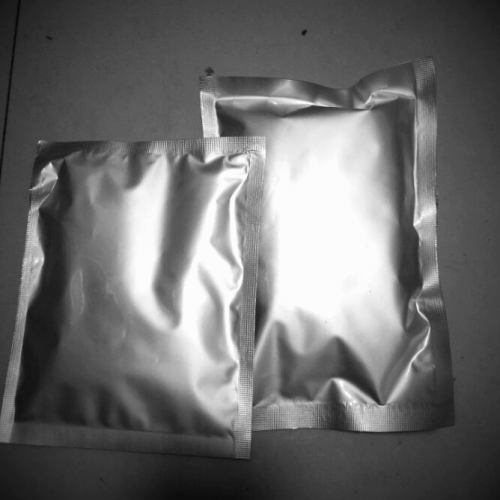Buy Mannitol Powder Medical Supplements Diuretic Online CAS 69-65-8
Mannitol Specification
Product Name: Mannitol
CAS: 69-65-8
Standard: National Standard
There is no card: Yes card
Natural/Synthetic: Synthesis
Content: 99%
Appearance: white powder
Packing: 25KG/kraft paper bag
Ingredients: D-mannitol
Physicochemical properties: white crystalline or crystalline powder; Molecular formula: C6H14O6 Molecular weight: 182.172 Density: 1.52g/ml Melting point: 167-170°C Flash point: 100°C Refractive index: 1.333 (20°C) Odorless and sweet. This product is soluble in water, slightly soluble in ethanol, almost insoluble in ether.
Category: Pharmaceutical Raw Materials
Field: Pharmaceutical Excipients
Deferred products: tablets; anticancer drugs, antibacterials, antihistamines, vitamins, hangover drugs, mouth refreshers
Application: Mannitol can be used as a dehydrating agent and osmotic diuretic, can also be made into injections, and can also be used as an excipient of tablets for anticancer drugs, antibacterials, antihistamines, vitamins, hangover drugs, etc. Mouth cooling agent and other tablets.
Usage and dosage: 1. Adults commonly used diuretic. The usual dose is 1 ~ 2g/kg body weight, generally 20% solution 250m1 intravenously, and adjust the dose so that the urine volume is maintained at 30 ~ 50m1 per hour. 2. Pediatric used diuretic. According to the weight of 0.25 ~ 2g/kg or body surface area of 60g/m2, 15% ~ 20% solution intravenous infusion within 2 to 6 hours.
What is Mannitol?
Mannitol is a type of sugar alcohol which is also used as a medication. As a sugar, it is often used as a sweetener in diabetic food, as it is poorly absorbed from the intestines. As a medication, it is used to decrease pressure in the eyes, as in glaucoma, and to lower increased intracranial pressure. Medically, it is given by injection. Effects typically begin within 15 minutes and last up to 8 hours.
Mannitol Certificate of Analysis
| Product name |
Mannitol |
| CAS No. |
69-65-8 |
Outer Packing |
25kg/drum |
| Production date |
2018-05-06 |
Shelf life |
2020-05-05 |
| Standard adopted |
Pharmacopoeia of the People’s Republic of China 2015 Edition II |
| Items of analysis |
Specification |
Results |
| Character |
White crystal or crystalline powder, odorless. Soluble in water, slightly soluble in ethanol, almost insoluble in ether |
Conforms |
| Melting point |
166-170℃ |
166.2-167.3 |
| Specific rotation |
+137-+145 |
+140 |
| Identification |
(The infrared absorption spectrum of this product should be consistent with that of the control |
Conforms |
| Acidity |
Pink |
Conforms |
| Clarity and color of the solution |
Should be clear colorless or lighter than No. 1 turbidity standard solution |
Conforms |
| Reducing sugar |
Consumption of sodium sulphate titrant must not be less than 12.8ml |
18.93ml |
| Chloride |
≤0.003% |
<0.003 |
| |
|
|
| Sulfate% |
≤0.01 |
<0.01 |
| Oxalate % |
≤0.02 |
<0.02 |
| Loss on drying % |
≤0.5 |
0.10 |
| Residue on ignition% |
≤0.1 |
0.02 |
| Heavy metal |
No more than 10 parts per million |
Less than 10 parts per million |
| Arsenic salt |
≤0.0002% |
<0.0002% |
| Assay |
98.0-102.0 % |
99.5% |
| Relative substance |
The sum of the area of each impurity peak must not be greater than 2 times the area of the main peak of the control solution |
0.56 |
| Total number of oxytobacter cfu/g |
≤100 |
<10 |
| Mold and yeast cfu/g |
≤30 |
<10 |
| Endotoxin EU/g |
<1.25 |
<0.625 |
| Conclusion |
Qualified |
Mannitol Side Effects
Common side effects from medical use include electrolyte problems and dehydration.Other serious side effects may include worsening heart failure and kidney problems.

